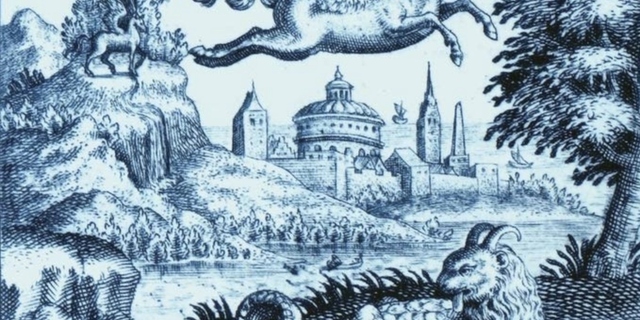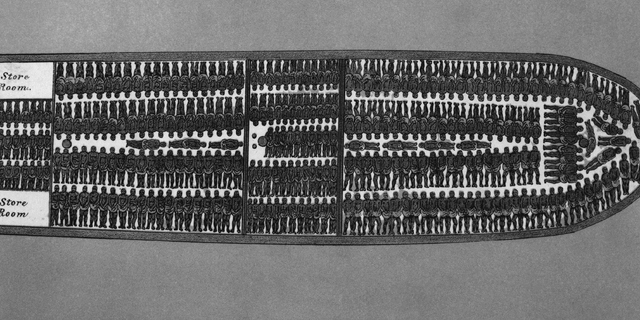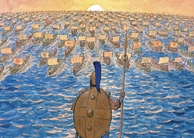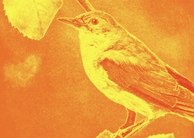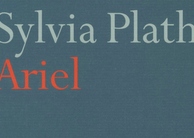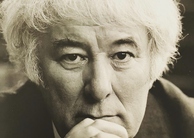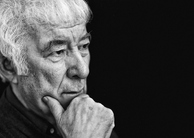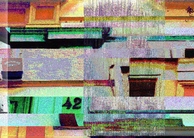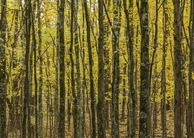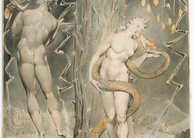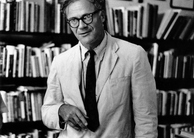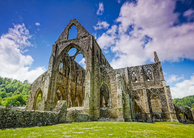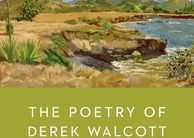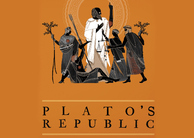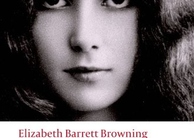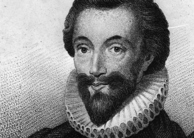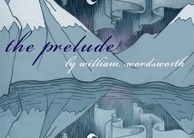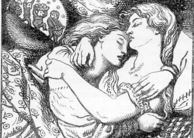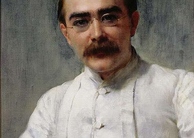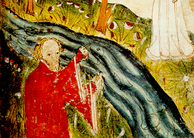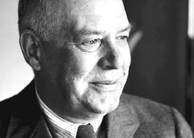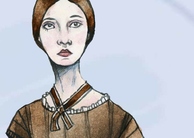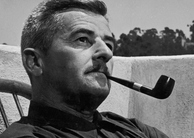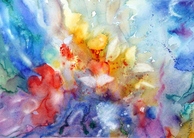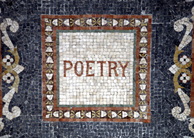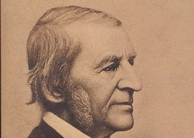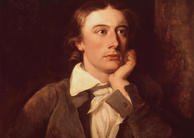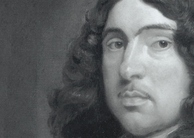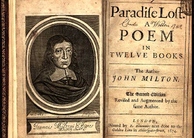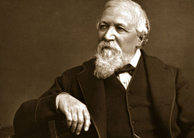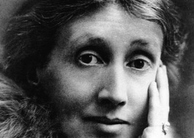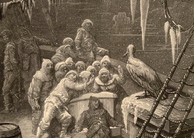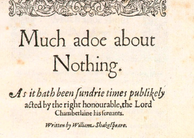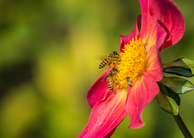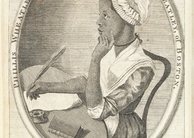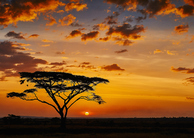|
Poetry (tagged articles)
The keyword Poetry is tagged in the following 48 articles.
2022, Vol. 14 No. 09
In adapting the twelfth-century story Layla and Majnun, Susan Youssef’s 2011 film Habibi Rasak Kharban re-imagines the Arabic folk tale in the context of Israeli occupation of Palestine, wherein the significance of journeys arises... Read Article »
2022, Vol. 14 No. 04
British Poet Laureate Carol Ann Duffy’s The World’s Wife presents a fresh outlook on myths and fairy tales, by retelling them through sociosexually liberated women. The poems feature many themes such as murder, sexuality and childhood... Read Article »
2022, Vol. 14 No. 03
This paper explores the complexity of Whitman’s nationalism and, with reference to Leaves of Grass (1856), examines the apparent paradox between Whitman’s Poetry of love and recognition and his imperialistic impulses. This paper draws... Read Article »
2021, Vol. 13 No. 04
Often thought to be a recent development of pop culture, writers have been using biting clapbacks in response to criticism since antiquity. This essay will explore how poet and scholar Sir Philip Sidney effectively manipulated poetic devices in... Read Article »
2021, Vol. 13 No. 03
Intersecting Edouard Glissant’s poetics with Hortense Spillers’ theory of race, gender, and sexuality alchemizes a new conception of the Middle Passage’s spatiotemporality. With the slave trade haunting the living, this paper attempts... Read Article »
2021, Vol. 13 No. 02
Although most Ancient Greek literature focused on male characters, a literary analysis of Homeric Poetry reveals an inquisition of femininity, motherhood, and what it meant to be a woman in Ancient Greece. Throughout the epic The Iliad and its sequel... Read Article »
2021, Vol. 13 No. 02
This paper explores Keats’ depiction of death in “Ode to a Nightingale” and “The Eve of St. Agnes.” “Ode to a Nightingale” juxtaposes two types of death. The first kind of death is a drowsy union with nature... Read Article »
2020, Vol. 12 No. 09
Sylvia Plath’s posthumously published collection of Poetry, Ariel, is perhaps best defined by the vivid imagery that delves deep into Plath’s psyche. Throughout the collection, Plath explores dimensions of herself: her past, present,... Read Article »
2018, Vol. 10 No. 10
Innocent lamb, savage tiger, free-flying eagle – time after time animals interrupt Poetry as the ideal, the muse, the hero, or the grotesque operating alongside humanity. In tracking animal imagery throughout contemporary Irish Poetry, we... Read Article »
2018, Vol. 10 No. 03
In his poem ‘Punishment’ from the Poetry collection North (1975), Seamus Heaney picks up the voice of a witness who is suspended between the possibilities of love, silence, voyeurism, outrage and above all, the understanding of the process... Read Article »
2017, Vol. 9 No. 11
The period of time from the Bebop era to the present—mid-1940s onwards—has been an era of great cultural evolution in the United States, and in few groups more so than the African American community. A factor particularly significant... Read Article »
2017, Vol. 9 No. 04
Music functions as a source of healing in Toni Morrison’s Jazz, both to the bird who is inexplicably sad and for the broken relationship between Violet and Joe, the novel’s two main adult characters. The bird cheers up and regains its... Read Article »
2017, Vol. 9 No. 02
First published in 1591 but thought to be composed sometime during the previous decade, Sir Philip Sidney’s Astrophil and Stella recounts the evolution of the relationship between the fictional, titular characters primarily from young Astrophil... Read Article »
2016, Vol. 8 No. 10
This essay first explores how Romantic poets William Wordsworth and Percy Shelley invoke the medium of language, specifically poetic language, to opine on the relationship between the reader’s sense experience and freedom. Subsequently, this... Read Article »
2016, Vol. 8 No. 08
Two conflicting modes of living—happiness pursued obediently (Godly) versus happiness pursued disobediently (Satanic)—produce persistent problems with conceptions of free will in John Milton’s Paradise Lost. The Godly mode of happiness... Read Article »
2016, Vol. 8 No. 03
Upon studying Robert Lowell’s distinguished body of Poetry, one subconsciously adopts an overwhelming sensation of pity, reverence, and bewilderment concerning his oh-so deranged verses. His early work, found within Lord Weary’s Castle... Read Article »
2015, Vol. 7 No. 09
Wordsworth’s “Tintern Abbey” takes on an abundance of ideas regarding nature’s ability to preserve one’s memories as well as past and present perceptions. Wordsworth conveys his experiences with nature to readers through... Read Article »
2015, Vol. 7 No. 09
In his Nobel Lecture, Derek Walcott described the experience of watching a Ramleela performance in a village in Trinidad, remarking: "... Two different religions, two different continents, both filling the heart with the pain that is joy.”... Read Article »
2015, Vol. 7 No. 09
One of the greatest ironies of Plato's Republic is that, although he condemns the poets and exiles them from his idyllic city, the Republic is perhaps one of the greatest literary works of all time, and a poem in its own right. Although written... Read Article »
2015, Vol. 7 No. 03
Elizabeth Barrett Browning’s Aurora Leigh (1856) is an apocalyptic work, as seen in Aurora and Romney’s vision of the New Jerusalem. Barrett Browning was interested in the Apocalypse in all its literary transformations for most... Read Article »
2014, Vol. 6 No. 11
This paper looks at the poet John Donne’s method of incorporating sexual imagery into religious and spiritual contexts. The main features of Donne’s technique arise from his notion of ecstasy. Donne’s ecstasy describes how the... Read Article »
2014, Vol. 6 No. 03
This dissertation explores late eighteenth and nineteenth century views of the mother-infant[1] relationship and how they reveal conceptions of the self. I investigate historical changes in the understanding of infantile development, primarily through... Read Article »
2014, Vol. 6 No. 01
In "Goblin Market" (1862), Christina Rossetti (1830‑1894) presents a story of two sisters who must endure carnal lust in order to embrace a higher and purer realm of sexuality: marriage. This poem is a story of renunciation, but not one of... Read Article »
2013, Vol. 5 No. 11
Critical opinion of Rudyard Kipling, his imperialism, and his oeuvre has radically changed in the last century. Depending on the literary history and the time period, Kipling has been seen as either an exclusively South African poet (Warren 415),... Read Article »
2013, Vol. 5 No. 08
Patience, the third poem in Cotton Nero A.x., tells the story of the Old Testament prophet Jonah, placing the narrative within the context of the virtue “pacience” (ll. 1, 531). This, however, is the crux: how much of Patience is simple... Read Article »
2013, Vol. 5 No. 07
George Herbert's (1593-1633) three-part work The Temple (1633) denotes the nature of his relationship with God. He conveys this unique relationship through the symbol of the Eucharist, which is both the celebration and memorialization of Christ'... Read Article »
2013, Vol. 5 No. 01
In his poem “The Plain Sense of Things,” Wallace Stevens strikes out in a direction that differs greatly from the established norms and expectations of Poetry before the Modernist era. Stevens, at times, moves against traditions such... Read Article »
2012, Vol. 4 No. 08
Forms of Poetry are constantly changing as authors stray from what is conventional and familiar, and delve into what is new and different. Elegies that one finds in twentieth century literature are far from what one would have read centuries prior... Read Article »
2011, Vol. 3 No. 09
Born in 1830 to Calvinist parents in Massachusetts, Emily Dickinson is renowned as one of America’s greatest poets. Though her poems often focused on death, she in fact wrote on many subjects. Life, nature, love, science, heaven, hell, religion... Read Article »
2011, Vol. 3 No. 06
William Carlos Williams’s “The Red Wheelbarrow” contains four two line stanzas in which the first line contains three words and the second contains one word with two syllables; it is also an awesome, awesome poem. With four stanzas... Read Article »
2011, Vol. 3 No. 05
Perusing famous works of literature, one would be hard pressed to find a volume that does not concern itself with the relationship of a creation to its creator. It is a central concern of most religious texts, as well as much of the narrative literature... Read Article »
2011, Vol. 3 No. 02
It is universally accepted that a poem, at least a “good” poem, should be able to stand by itself, to be able to strike a chord with its audience, whether this impact is immediate or more subtle and gradual. However, even the best-written... Read Article »
2011, Vol. 3 No. 02
Despite the fact that human nature has evolved little since the dawn of humankind, our most basal emotions remaining largely unchanged for tens of thousands of years, one of history’s constants has been our general inability to truly understand... Read Article »
2011, Vol. 3 No. 02
Elements of defiance in the face of traditionally European ideals and practices are evident throughout Luci Tapahonso’s 2008 A Radiant Curve, most notably in her use of French- and Italian-based forms for many of her poems. Her use of the... Read Article »
2011, Vol. 3 No. 01
Yevgheny Yevtushenko’s Poetry spans time and space when relating to Russia and its history. His Poetry, as he himself, declares, is intended to teach the conscience of anyone who reads it. And indeed, his Poetry, whether political or romantic... Read Article »
2010, Vol. 2 No. 12
We can categorize poetic texts into three distinct types: the narrative poem, or poem that tells a story; the epic poem, or a long narrative poem on heroic subjects; and the lyric, in which a poet or speaker expresses an emotional state. (Schweibert... Read Article »
2010, Vol. 2 No. 11
What began in New England in the early nineteenth-century as a reform of the Congregational Church grew into what some scholars consider to be one of the most monumental movements of religion, philosophy and literature in American history. Humbly... Read Article »
2010, Vol. 2 No. 11
John Keats’s “When I Have Fears” has often been read as a poem about a poet and his fear of mortality. Such a fear is not hard to unearth in Keats’s collection of Poetry, not to mention his famous letters to family and friends... Read Article »
2010, Vol. 2 No. 04
The meaning behind both Andrew Marvell’s “To His Coy Mistress” and Shakespeare’s sonnets has been debated since their respective publications. Marvell’s poem and specifically Shakespeare’s sonnets 55 and 60 have... Read Article »
2010, Vol. 2 No. 02
The story of mankind's fall from Eden as written by John Milton in his epic poem Paradise Lost portrays a classically heroic Satan and a modern hero in God's Son, Jesus Christ. While Satan fits the archetype of an epic hero, he is in fact showing... Read Article »
2010, Vol. 2 No. 02
Robert Browning’s two poems, “Porphyria’s Lover” and “My Last Duchess,” have some striking similarities. Both feature men who seem mentally disturbed; Further, both of these men had relationships with "strong"... Read Article »
2010, Vol. 2 No. 02
Virginia Woolf’s To the Lighthouse follows the development of the painter, Lily Briscoe, as she strives to create a meaningful space for her artwork in an increasingly critical and unkind world. Woolf’s stylistic devices, especially... Read Article »
2010, Vol. 2 No. 01
Samuel Taylor Coleridge’s “The Rime of the Ancient Mariner” is about a man on a voyage by ship, who in one impulsive and heinous act, changes the course of his life – and death. The Mariner faces an inner struggle over... Read Article »
2010, Vol. 2 No. 01
In William Shakespeare’s Much Ado About Nothing, all of the main characters experience and participate in some form of deceit designed to dupe another character. However, among the societal members of Messina, Don John particularly stands... Read Article »
2010, Vol. 2 No. 01
The poems which Sylvia Plath composed in the weeks and days immediately preceding her death contain some of the most disturbing themes present in Modernist Poetry. In Ariel, an anthology containing her most fervent, emotional, and troubling Poetry... Read Article »
2010, Vol. 2 No. 01
Elizabeth Bishop, known for her reticent poetic style, reveals the secrets of her personal life through carefully wrought metaphors. In her villanelle, “One Art,” Bishop reveals the purpose of art and the significance of poetic... Read Article »
2009, Vol. 1 No. 12
Children’s literature in the context of this research paper (and hopefully too in the eyes of the majority) is the ultimate escape; it is neither box nor leash nor constraint of any sort. It is the one genre of literature that does not hold... Read Article »
2009, Vol. 1 No. 11
Derek Walcott’s “A Far Cry from Africa” expresses how Walcott is torn between “Africa and the English tongue [he] love[s]” (30). Several of Walcott’s poems – “The Schooner Flight” and Omeros &... Read Article »
Expedited Article Review
Submit an article and get a decision fast.
If you need a fast decision, INQUIRIES Journal offers expedited processing of your submission for a small fee. Depending on the expedited review option you choose, you can receive a decision in as few as 5-days.
In addition to a shorter review period, the fee supports the journal's continued operation and open-access publishing model. Standard submissions are always free. Submit Now » - Submit an Article to Inquiries Journal -
|




